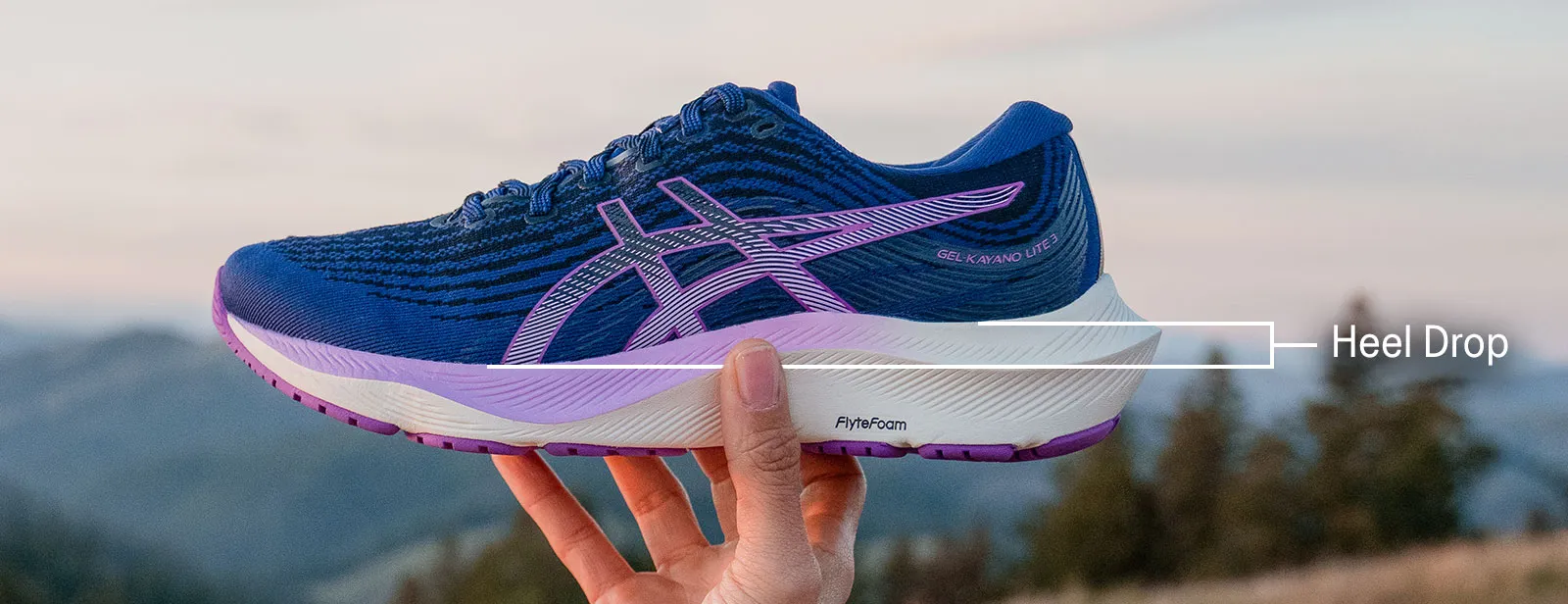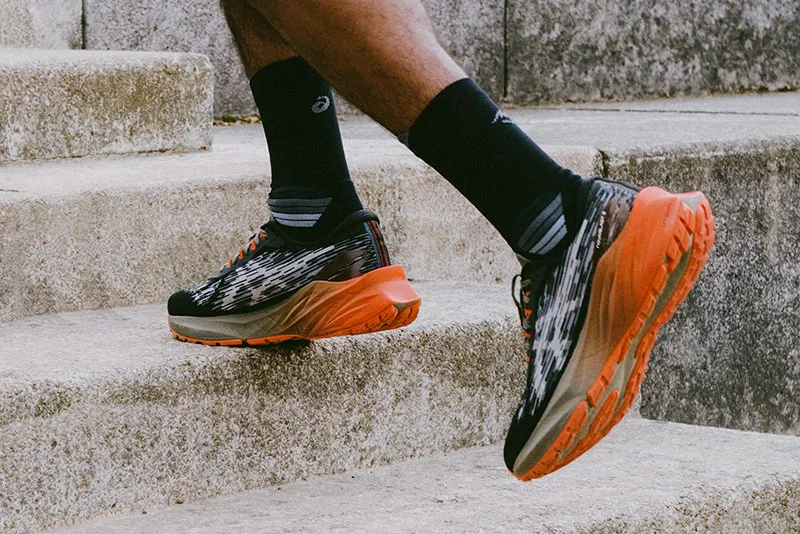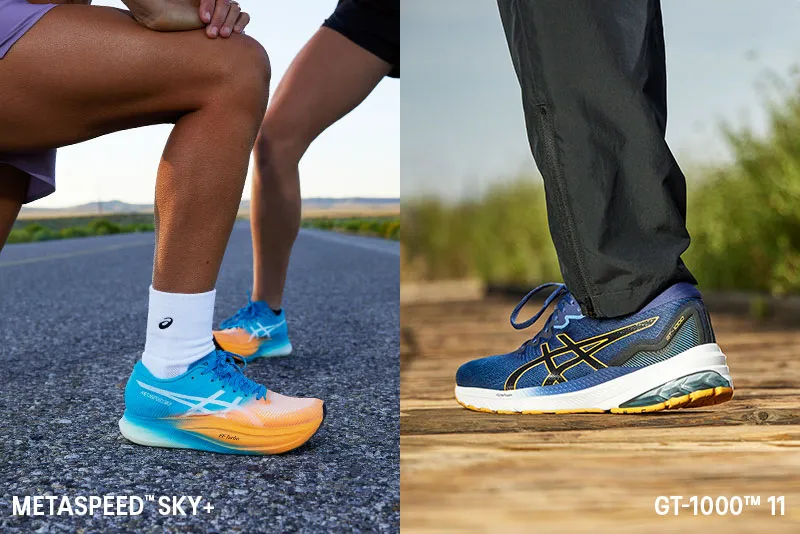
What Is Heel Drop and How to Measure This in My Shoes
December 22, 2022
A shoe's heel drop ranges from 0 mm to 14 mm, and 10 mm remains the most common heel drop available. Other names for heel drop include shoe drop, shoe offset, heel differential, toe drop, pitch, and gradient. When shopping for running shoes, heel drop is one feature to consider.
Why Does Heel Drop Matter?
The heel drop of your running shoes can affect the way you run. It shifts your gait, placing pressure on different parts of your lower body. A shoe with a lower drop promotes a midfoot and forefoot strike, while a higher drop shoe encourages a rearfoot strike. As a result, the lower drop shoe places additional stress on the ankle and lower leg. A higher drop shoe shifts the stress to the knees and hips.
Here's a closer look at how heel drop can change the way you run.
- Cadence: A lower drop can shorten step length to improve cadence. A higher drop slows footswitch.
- Flexion: Low drop shoes allow for more ankle flexion. High drop shoes allow for more knee flexion.
- Running form: Runners have to shift to a midfoot or forefoot strike when wearing shoes with a low heel drop. A higher drop shoe signals the runner to shorten their stride.
- Injury: Runners with knee pain may prefer wearing low-drop shoes. Runners with tight Achilles tenders may feel more comfortable in high heel drop shoes.
If you're new to running, heel drop may be less important than other shoe features. You're still learning about your natural gait and how your body feels during a run. Look for a shoe that feels comfortable and supports your foot.

What Type of Heel Drop Is Best?
Heel drop is a matter of personal preference for most runners. What works for one may not be the best choice for another. The goal is to find a shoe that feels comfortable, fits your foot, and provides the support you need to complete your running sessions.
High-Drop Shoes
The most common heel drop is 10 mm, which falls under the category of high-drop shoes. These shoes have heel drops ranging from 9 mm to 14 mm. The GEL-NIMBUS® , GEL-KAYANO® , and GEL-CUMULUS® shoes by ASICS are high drop shoes with a heel drop of 10 mm.

Mid-Drop Shoes
Mid-drop shoes have a heel drop between 5 mm and 8 mm, but shoes on the lower end of this range can still have minimalistic qualities. ASICS offers several running shoes within this category, including the METASPEED™, GEL-NOOSA TRI™, and GT-1000™ running shoes.
Low-Drop Shoes
The low-drop category includes shoes with a heel drop between 1 mm and 4 mm. These minimalist shoes provide a balance between a barefoot running experience and support for the foot. If you're not quite ready for a zero-drop shoe or have tried it and didn't like it, low-drop shoes may be your answer.

Zero-Drop Shoes
Zero-drop shoes simulate barefoot running. Many shoes in this category have little to no cushioning so that the foot stays as flat as possible. The ASICS METARIDE® is a zero drop shoe that features cushioning designed to support the foot and absorb shock during running sessions.
Calculating Heel Drop
You won't be able to identify a shoe's drop just by looking at it. The amount of cushioning between the shoe and the ground isn't the same as heel drop. Most manufacturers and suppliers include heel drop in their product descriptions, so you can easily find this information on their websites. If you can't find a shoe's heel drop listed anywhere, you can calculate it on your own.
To do this, you need a digital caliper like the ones used in woodworking, carpentry, and metal fabrication. Follow these steps.
1. Open the caliper and pinch the shoe's sole. Make sure the caliper on the outside of the shoe is on the bottom of the shoe and not inside a groove.
2. Write down the measurement.
3. Repeat on the front of the shoe. To reach inside the shoe, slide one side of the caliper through the side of the shoe's tongue until it touches the inner sole.
4. Subtract the forefoot measurement from the rear measurement to determine the heel drop.
If you choose to calculate heel drop on your own, keep in mind that your measurement is taken from an unloaded shoe. The manufacturer takes into account compression from the weight of a human body when measuring heel drop.

Finding the Right Running Shoe for You
There's nothing quite like the feeling of slipping on a pair of just-right-for-you-shoes and hitting the road. Heel drop may be a factor to consider when choosing a new shoe, but it's not the only one. If you like the shoes you're currently using, there's no need to switch. When you do want to switch it up and try a shoe with a different drop, take it slowly and give your body a chance to adjust.










